Optical fiber transmission is a kind of optical waveguide made of glass or other materials. The basic principle of light transmission in an optical fiber is total reflection.
When light is incident from a light-density medium (with a relatively high refractive index) to a light sparse medium (with a relatively low refractive index), the light is reflected to the original medium.
What is an optical module?
An optical module consists of an optoelectronic component, a functional circuit, and an optical interface. The optoelectronic component consists of a transmitting component and a receiving component.

What’s a “mode”?
Mode distribution is an important feature of fiber transmission. The light transmitted along the fiber core is divided into two components: axial and cross-section plane waves. The plane waves transmitted along the cross-section are completely reflected at the interface between the fiber core and cladding, when the phase change of each reciprocating transmission is an integer multiple of 2 x Pi, standing waves can be formed in the cross section. Such standing waves are called “modes”.

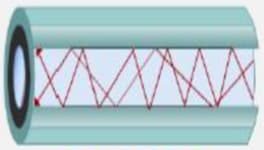
(Single-mode) (Multi-mode)
The core diameter of the multi-mode optical fiber (orange) ranges from 50 um to 62.5 um, and the outer diameter of the cladding is 125 um, which applies to short-distance transmission. The core diameter of the single-mode optical fiber (yellow) is 8.3 um, and the outer diameter of the cladding is 125 um. The single-mode optical fiber (yellow) is mainly used for medium- and long-distance transmission.
The main advantages of optical fiber communication are large capacity, low loss, long relay distance, high confidentiality, small size, light weight, and inexhaustible raw materials. Disadvantages: easy to break, difficult to connect, and afraid to bend.

Single-mode optical module
The single-mode optical module is used together with the single-mode optical fiber. It uses the LD or LED with narrow spectral line as the light source and can transmit data signals with very high bandwidth. Therefore, the transmission distance is long. The single-mode optical module is labeled SMF, and the optical fiber is yellow. The wavelengths near the 1310 nm and 1550 nm windows are mainly used.
Single-mode optical modules are classified into single-mode single-fiber and single-mode dual-fiber. Single-mode single-fiber optical modules must be used in pairs. For example, SFP-1310T-20-SMF (single-fiber bidirectional, 155 Mbit/s, 1310 nm transmitting and 1550 nm receiving, 20 km) must be used on one side, and SFP-1310R-20-SMF must be used on the other side. (Single-mode single-fiber bidirectional, 155M, 1550 nm transmit, 1310 nm receive, 20 km).
Application scenarios of single-mode optical modules:
The bandwidth potential of single-mode optical modules makes it the best choice for high-speed and long-distance data transmission, and is used for long-distance transmission. Single-mode optical modules support 20 km, 40 km, and 80 km long-distance transmission. The transmission rate can be 155 Mbit/s, 1.25 Gbit/s, or 10 Gbit/s. Here are some examples: eSFP-FE-LX-SM1310, eSFP-FE-LH80-SM1550, OGSME4000.
Multi-mode optical module
The working wavelength of a multi-mode optical module is 850 nm. Because of severe inter-mode dispersion, a multi-mode optical module can only be used for short-distance transmission (SR). Generally, a multi-mode optical module is called a multi-mode optical module whose transmission distance is less than 2 km. The label of a Dahua optical module is MMF.
Multi-mode optical modules are used in the following scenarios:
Multi-mode optical modules are mainly used in networks with relatively short transmission distances, such as LANs. Such networks have many nodes, connectors, and bends, a large quantity of connectors and couplers, and a large number of light sources per fiber length. Multi-mode optical modules can effectively reduce network costs. The multi-mode optical module supports the transmission distance of 300 m or 2 km. The transmission rate can be 155 Mbit/s, 1.25 Gbit/s, or 10 Gbit/s.
How to select optical modules?
Single-mode single-fiber optical modules must be used at both ends (one RX end and the other TX end), and the transmission rates at both ends must be the same.
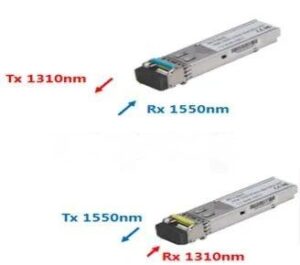
When using a single-mode two-fiber optical module, you must use the single-mode two-fiber optical module at both ends and have the same transmission rate and wavelength.
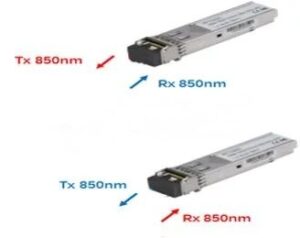
If the switch’s GE optical port is backward compatible with 100 Mbit/s, use 100 Mbit/s optical modules. Otherwise, only 1000 Mbit/s optical modules can be configured.
Only single-mode optical fibers (yellow) can be used for single-mode optical modules, and only multi-mode optical fibers (orange) can be used for multi-mode optical modules.
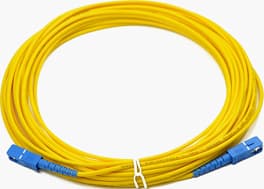
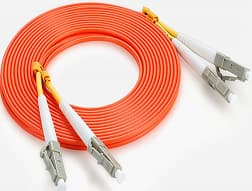
Any question please contact CSD@telecomate.com








Leave a comment